With the death toll still rising from the now captured Calico Complex wild horses while a bereft public stands outside locked gates, plans have been laid and continue to be made to perpetuate the crimes against these wild ones that began so long ago.
To understand the magnitude of what has occurred here – as well as to grasp where it is going and why – first, we must travel back in time to witness what BLM did, how they got away with it and how they plan to continue harvesting the bitter crops they began cultivating over two decades ago.
This is the first in a series that attempts to disclose some of the known issues playing behind the scenes in the Calico Complex and beyond…
To understand the magnitude of what has occurred here – as well as to grasp where it is going and why – first, we must travel back in time to witness what BLM did, how they got away with it and how they plan to continue harvesting the bitter crops they began cultivating over two decades ago.
This is the first in a series that attempts to disclose some of the known issues playing behind the scenes in the Calico Complex and beyond…
PART I – THE PAST
WILD HORSE & BURRO AMLs: WHERE THEY BEGAN
WILD HORSE & BURRO AMLs: WHERE THEY BEGAN
In 1993/1994, BLM issued Final Multiple Use Decisions (FMUDs) for the Buffalo Hills, Leadville, Paiute Meadows and Soldier Meadows Livestock Allotments. These FMUDs established initial levels of use for livestock and some of the wild horses or burros found within the Calico Complex.
On December 10, 1993, the BLM issued a Full Force and Effect Decision to implement the FMUD for the Soldier Meadows Allotment. This decision received multiple protests by concerned members of the public and various organizations including the Nevada Commission for the Preservation of Wild Horses, Dawn Lappin of Wild Horse Organized Assistance and the Nevada Department of Wildlife.
On January 24, 1994, BLM responded to the Protest Points filed against the new Soldier Meadows decision, some of which have been highlighted below.
The Commission for the Preservation of Wild Horses and Wild Horse Organized Assistance (WHOA) asserted the BLM arbitrarily allocated forage to wild horses and livestock - an allegation BLM did little to dispute.
BLM’s response to the Commissions/WHOA’s Protest Point #4 stated that “It was recognized in the Management Framework Plan (MFP) that the forage allocation made for livestock and wild horses/burros was only a starting point and that numbers would be adjusted to appropriate levels based on monitoring”. (emphasis added)
BLMs response also stated, “The 1988 evaluation for this allotment documented that livestock numbers were too high so they were adjusted downward, but wild horses/burros numbers were not addressed. The re-evaluation for this allotment established the total carrying capacity for livestock and wild horses/burros based on monitoring data. The AUMs were then divided between livestock and wild horses/burros on a proportional basis (based on the ratio established in the Management Framework Plan-MFP) in accordance with MFP decision Range 1.1 and Wild Horse/Burro 1.1. I felt this was the appropriate and most equitable way to divide the total carrying capacity between livestock and wild horses/burros. We will continue to monitor to determine if these new stocking rates are appropriate, and if not make future adjustments”. (emphasis added)
Of additional relevance and concern are the issues raised in Protest Point #1 by the Commission/WHOA, which stated, “The Proposed Decision extends the land use plan short term objectives in excess of 14 years. Range Management-Management Framework III Decision RM-1 set a five year schedule to accomplish wild horse herd management area plans, and other approved activity plans, to establish appropriate management levels to assure viable herds in balance with their habitat by 1987. Short term objectives of the Proposed Decision adjusts the land use plan short term objectives to the year 2001.”
In BLMs response to Protest Point #1, BLM stated that, “Objectives are developed in site specific documents that implement the goals of the MFP. The short term objectives…were established in 1988 in the Livestock Agreement with the permittee. We look at the short term objectives in our re-evaluations and if our monitoring indicates we are not achieving these, then we conclude that we will not be able to achieve our long term objectives, so adjustments must be made. A new decision is issued with the necessary changes and we continued to monitor to see if those changes allow us to meet our short term objectives….This is a process”. (emphasis added)
However, once those initial starting point AMLs were set, BLM has never again revisited them nor continued to pursue the “process” - despite their admission that these goals were short term and required additional review to determine if they were appropriate or not.
Furthermore, no separate NEPA analysis of those AMLs has ever been produced. When BLM has done Final Multiple Use evaluations, officials just continued to reaffirm and perpetuate those initial stocking rates; no actual analysis or NEPA review of their appropriateness for wild horse or burro use required - even though BLM also admits wild horse populations have never actually been within the established parameters of these same AMLs since they were first set.
As noted above, the current wild horse AMLs for these areas are a perpetuation of general objectives established 27 years ago that had no site-specific public NEPA process, have continued to evade appropriate data collection, monitoring, analysis and/or reporting and in at least one known instance, BLM officials buried recent monitoring data that indicated wild horse AMLs could be adjusted upwards by a large margin. (Click Here for BLM Winnemucca Field Office’s Wild Horse & Burro Specialist court testimony regarding wild horses being five times over the established AMLs but Rangeland Health Objectives were still being met.)

Rock Spring Meadow Area. According to BLM Winnemucca file photos
obtained via FOIA, this area of Rock Springs is used exclusively by wild horses.
A Protest was also filed by the Nevada Division of Wildlife (NDOW) and in Protest Point #5, NDOW asserted, “The Proposed Decision establishes a carrying capacity by flawed assumptions without consideration of critical wildlife habitat.” and, “The Proposed Decision carrying capacity computation is based upon Example C of Appendix 2 of the "Rangeland Monitoring Analysis, Interpretation and Evaluation (TR 4400-7)'·. Example C assumes rangeland production is not uniform and utilization is uniform. Utilization data confirms the conclusions of the Re-evaluation that livestock distribution problems are causing heavy and severe utilization of critical wildlife habitat; thus the Proposed Decision's use and rationale for Example C is flawed for a carrying capacity computation.” (emphasis added)
BLMs response failed to address NDOWs wildlife and rangeland specialists concerns regarding errors and flaws they found within BLM’s carrying capacity computations.
BLM evaded addressing the flaws and errors noted by NDOW rangeland specialists by switching the focus too and agreeing with NDOWs assertions that poor livestock distribution was the primary cause of concern through heavy and severe riparian degradation noted throughout all years of monitoring at key sites.
Under NDOWs Protest Point #3, BLM responded to concerns regarding management plans and actions that continue to be fluid and without accountability through the year 2024 by stating, “The evaluation of monitoring identified livestock distribution as the primary management action to improve resource conditions; not a carrying capacity problem.”
BLM then referenced a new modification technique to former rangeland carrying capacity methods, which they began to explore in 1992, that omitted slight and light utilization categories and only considered moderate, heavy, and severe utilization categories to determine carrying capacity instead. BLM went on to state, “We felt this would cause the calculations to better emphasis the problems of poor distribution and over stocking. Using this modified technique for calculating carrying capacity and requiring the movement of livestock based on acceptable utilization limits we feel we will solve the problems identified in this re-evaluation”. (emphasis added)
This “modified technique” to measure grazing distribution patterns was then implemented as a new standard and BLM began substituting a monitoring technique for the original methods used to determine total carrying capacity, which is a critical method and tool to provide valuable data for areas in their entirety, not just at a few key or selective sites.
While this modification technique may be appropriate for monitoring grazing distribution patterns in order to make adjustments to livestock authorizations and/or seasons of use, it fails to address the entire scope of rangeland productivity for all multiple users by eliminating data on the full range of forage production.
Specifically, total carrying capacity computations are essential for determining forage available for wild horses, wild burros and wildlife species as their migratory distribution patterns and forage utilizations are often much wider in scope than domestic livestock. This data is necessary to adequately determine appropriate stocking levels for use outside the “poor grazing distribution” livestock zones and variances in utilization patterns from other grazers such as wild horses, burros and other large wildlife species.
These errors and flaws in carrying capacity computations noted by NDOW range and wildlife specialists in 1994 have never been addressed. Neither has the effectiveness or accuracy of substituting this technique to determine rangeland health been revisited, especially in context with its ability to appropriately designate the “optimum number” of wild horses and/or burros.
The BLM has substituted a monitoring technique used to identify poor grazing distribution as the primary tool to allocate forage, a technique that has an inherent biased towards forage utilized by wild horses/burros who historically demonstrate wider migratory and grazing distribution patterns than domestic livestock.

In the 2009 Calico Complex Wild Horse Capture Preliminary EA, BLM shows a photo of Burnt Springs (photo 8) titled, “Heavy riparian utilization”. Yet photos obtained from the Winnemucca Field Office via FOIA show this same photo in BLMs photo log but with the additional title of “Several spring sources, riparian/meadow complex, heavy horse and livestock use”.
The exclusive use of monitoring techniques that focus solely on utilization levels can also be affected by and/or used to manipulate data to support a foregone conclusion include the following factors: 1) location of monitoring sites; distance to water, terrain, near rockier areas, etc., 2) Key species (grass types) being monitored, 3) Difficulty of separating wild horse and/or burro use from livestock use, and 4) Trespass by livestock attributed to wild horses due to BLMs predominate reliance on grazing permit dates to distinguish impacts versus timely physical site-specific monitoring.
Also remember that in BLM’s response to the Commissions/WHOA’s Protest Point #4, BLM stated that adjustments to forage allocations between livestock and wild horses and burros were required by the Management Framework Plan to be “on a proportional basis based on the ratio established in the Management Framework Plan-MFP”.
So had BLM been allocating resources on a proportional basis since 1994?
LIVESTOCK
While the 1982 Management Framework Plan required forage allocations between livestock and wild horses/burros be based on proportional ratios, it doesn’t look like recent managers are familiar with this requirement.
In BLMs response to the 1994 Protest Points for the Soldier Meadows FMUD, BLM stated that stocking rates of livestock, wild horses and burros were being established as initial levels contingent on future monitoring and rangeland health data collection.
Yet in the Calico Complex Preliminary Capture EA, BLM reported that all wild horse/burro Herd Management Areas within the Complex have yet to be assessed for conformance with Standards of Rangeland Health. (Calico Complex Wild Horse Capture Plan, Preliminary EA, Section 1.5, Conformance with Land Health Standards pg.6)
The fact that no Rangeland Health Assesments have still not been done over 15 years later hasn't stop BLM from increasing livestock authorizations. Since the initial 1994 decision for the Soldier Meadows allotment affecting three of the HMAs within the Calico Complex, BLM has changed the livestock authorizations for Soldier Meadows at least twice, and Paiute Meadows at least once.
The most current Final Multiple Use Decisions (FMUD), which continued to re-affirm the initial AMLs for wild horses and burros that were originally set by an agreement between BLM and the 1988 livestock operator were re-issued for the Soldier Meadows Allotment in 2003, Paiute Meadows Allotment in 2004, and the Pine Forest Allotment in 2005, which established a 0 AML for wild horse use.

Summit Springs Wild Horse Area dated 7/29/08.
In the Calico Complex Preliminary EA, BLM shows a photo of Summit Springs in the Black Rock Range HMA (photo 7) to indicate low water flow and heavy wild horse use (above). Yet photos obtained from the Winnemucca Field Office via FOIA show the Summit Springs “Pipeline” leading to the Pine Forest Allotment contains a full reservoir and troughs – no wild horses allowed (below). The decision to issue an AML of 0 for wild horse use in the Pine Forest Allotment was implemented by BLM on 9/30/05.

Summit Springs Pipeline-Pine Forest Allotment dated 7/29/08.
In November 2005, Kudrna, Ltd. purchased the Soldier Meadows Ranch and acquired the grazing privilege for the Soldier Meadows Allotment. Kudrna then requested BLM modify the existing grazing system in order to acquire and maintain a stable herd size. In response, BLM issued a new grazing decision on January 14, 2008, for the Soldier Meadows Allotment, which adjusted cattle authorizations upward from a former initial stocking rate of 7,680 to a new initial stocking rate of 8,784 AUMs to support 800 head of cattle with a season of use authorized from 1/16 through 12/15. This authorization also included increases up to 12,168 AUMs for livestock consumption based on two year monitoring intervals as well as authorizing 3,092 AUMs of “suspended use” for temporary non-renewable grazing permits for a total of 16,070 AUMs - the entire AUM amount BLM had determined was available for all grazers in the area.
The January 2008 Final Decision for the Soldier Meadows Allotment also combined two key elements from different Alternatives evaluated throughout the public consultation process, that being; the Proposed Action to increase livestock allocations based on a 30% utilization level and the No Action Alternative, where no increase in livestock allocations would be authorized but would maintain a 50% utilization level.
Specifically, BLM chose to combine two of the most controversial components of both Alternatives into one, which were; increasing both livestock numbers and utilization levels simultaneously. No evaluation or analysis was ever done with respect to combining these two factors into one proposal or their potential impacts.
In 2004, BLM authorized an increase in the Paiute Meadows Allotment for exclusive livestock use by an additional 750 AUMs. (To learn more about the Paiute Meadows, Click Here to read, “Katie on Calico”.
Fenceline between Soldier Meadows and Pine Forest Grazing Allotments.
Soldier Meadows side (left) is cited as used exclusively by wild horses
while the Pine Forest side (right) is grazed by livestock only. BLM
Winnemucca photo file dated 7-29-08 obtained via FOIA.
SUMMARY
Soldier Meadows side (left) is cited as used exclusively by wild horses
while the Pine Forest side (right) is grazed by livestock only. BLM
Winnemucca photo file dated 7-29-08 obtained via FOIA.
SUMMARY
To recap what BLM did in the past to determine the current wild horse and burro AMLs for a portion of the Calico Complex:
> The 1988 allotment evaluation and Livestock Agreement failed to analyze or include wild horse/burro populations and/or their impacts in any manner. However, this was the basis for determining the initial wild horse and burro AMLs that are still being perpetuated today.
> In 1994, in response to accusations that the BLM arbitrarily allocated forage to wild horses, burros and livestock, BLM did not dispute the initial forage allocations were only starting points and made no claim that these levels were actually appropriate until monitoring validated them.
> The validity of continuing to support the current wild horse/burro AMLs as appropriate were contingent on proportional allocations between livestock and wild horses/burros and monitoring data to determine class use. In other words, they had to determine who was eating what.
> The BLM implemented a new technique in 1992 that substituted a monitoring technique used to determine grazing distribution patterns to replace total carrying capacity evaluations. The exclusive incorporation of this new technique has never been re-evaluated for accuracy or appropriateness and may be especially relevant towards those rangeland users who exhibit wider distribution patterns such as wild horses, burros and other wildlife.
> BLMs recent authorization of increases in livestock authorizations in the Soldier Meadows and Paiute Meadows Allotments, despite well known drought conditions, indicates available forage has been re-allocated for exclusive livestock use and failed to conform to requirements outlined in the 1982 Management Framework Plan that specified all future forage allocation adjustments must be done in a proportional ratio between wild horses/burros and livestock.
> Based on BLMs reported wild horse populations from their March 2008 aerial census, wild horses exceeded the current established low AMLs for the Black Rock West, Warm Springs Canyon and Calico HMAs by at least 1,000 wild horses at the same time BLM was authorizing the increase of cattle use in the Soldier Meadows Allotment. Despite these "high" wild horse populations, BLMs monitoring information supported increased livestock use indicating impacts by wild horses were still marginal even at these high population levels - though BLM refused to publicly disclose or admit this fact in the 2009 Calico Complex Wild Horse Capture EA.
> Current wild horse AMLs within these areas fail to accurately reflect “excess” populations. Many of the Calico Complex wild horses were removed merely to support an AML goal that has never been seriously reviewed since the initial agreement was made between BLM and the livestock operator in 1988.
Calico Complex Wild Horse Captures - 2004

Photo from BLM Winnemucca Field Office photo files obtained via FOIA dated 2/13/2004.
Associated Links
BLMs Response to 1994 Protests of SMA FMUD


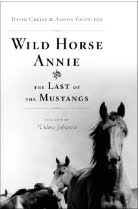








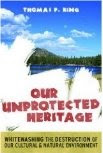



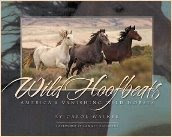




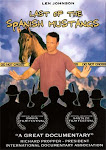





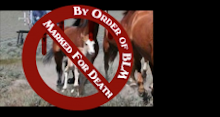

2 comments:
I think it's also important to note, for our Wildlife Advocates, these same decisions also effected changes in AUMs for mule deer, prong horn & Big Horn.
In 2003, allocations for wildlife in Paiute Meadows & Soldier Meadow were 2325, combined.
On 1-14-08, the allocations were 1479, (786 for mule deer), (429 for prong horn), (264 for Big Horn, who regularly die from bacterial pneumonia contracted from grazing on the same forage as domestic sheep), a loss of 846 AUMs.
So tell us again - who does the BLM work for?
Thank you for this very comprehensive post. I had planned to go back and photograph/observe the Onaqui herd this summer, but they were rounded up in the Fall. There are now 300-40 cattle there, with a handful of Mustangs.
Post a Comment